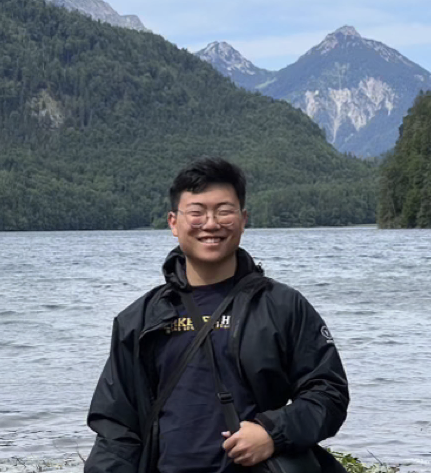Humans of Haas: James Li
Written by Michael Xia.
James Li is a first-year studying EECS and Business through UC Berkeley’s M.E.T. program. Passionate about entrepreneurship, Li founded his first startup in high school that sold in-game currency and received over 12,000 orders and $250,000 in revenue. Currently, Li is the co-founder of SportVue LLC, a startup that assists in the skills development of hockey players by helping them look up when they play. In his free time, Li enjoys ice hockey, mountain biking, and golf.
Can you talk about your startup?
We’re trying to solve a training and safety problem in ice hockey which exists among players that oftentimes are younger than 18 years old. Often, players will look down at the puck to make sure they know where it is, because when you’re skating, you’re trying to move at fast speeds. Now when you’re looking down, in practice, it’s fine because there’s not that much in-game pressure. But during a game, everything’s moving so fast, and when you look down at the puck you don’t know where your opponents are, so you can get hit. If you don’t know where your teammates are, you can miss the opportunity to make a pass, shoot the puck, or score a goal.
Our solution is a device that clips onto your helmet. Every time you look down past a certain angle which you can set, it’ll shine a light and to remind you ‘OK my head is down, I need to pick my head up.’
Where do you see the future of this startup?
Eventually, we want to release a paid subscription software to track analytics such as player’s maximum speed or when he looked down. There are solutions in the NHL and in college hockey, where these analytics are being tracked, but these devices are extremely expensive. A set could cost up to $3000. My cofounder and I have researched how they’ve made it and how we can make it for $30 per device and sell a whole kit for $500. Right now, we want to get this one device out of the garage and see how people react to it, get some exposure and get some experience and then work on this version two product.
What sparked that idea?
I started playing ice hockey when I was in middle school, and so my dream was to play D1 hockey: I wanted to play at an Ivy League school, get a good education, play ice hockey. I loved the sport, really liked CS, and was passionate about business.
But then sophomore year, when my coach asked me what I wanted to do when I grew up and I said I wanted to play D1 hockey, he pretty much said it’s not gonna happen, and I went home and I cried for an hour in the basement heartbroken, because I practiced a lot to get there.
It took six months to reflect on what went wrong, and I realized that I had these skills in practice to protect the puck and to move the puck, but during games, you can only move ten feet, and that’s it – you lose the puck. I went to see if other people have this problem. I asked my teammates, I asked a former coach, I asked parents, “do you see your kids having this problem, and is it hindering their ability to move up and play more competitive levels of hockey.” They all told me it was a problem.
I thought–technologically, it’s a lot more simple than many other applications of machine learning. I knew it was feasible to implement, so I made a prototype to see if people are could use it.


